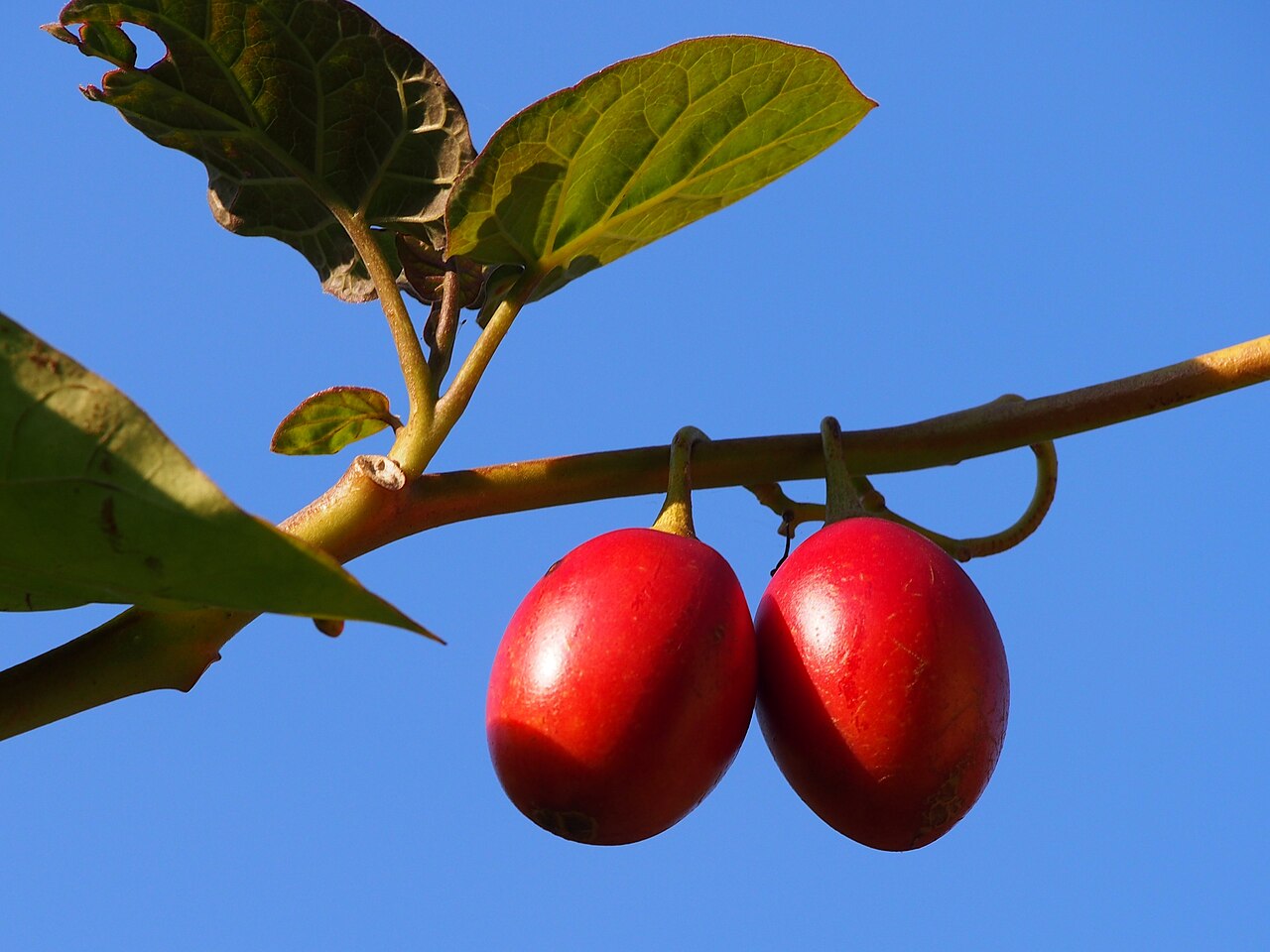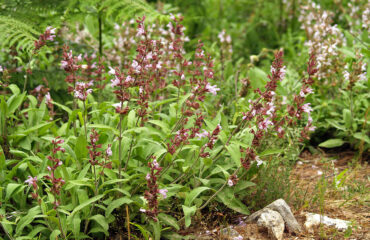Solanum betaceum (Tamarillo) Propagation Methods
This guide equips you with the essential knowledge to propagate and nurture tamarillo trees, ensuring that these fascinating and productive plants thrive and bring a touch of the tropics to your garden or home.
Introduction
Solanum betaceum, commonly known as the tamarillo or tree tomato, is a small, fast-growing tree renowned for its egg-shaped, tangy fruit. Originating from the Andean region of South America, tamarillos have gained popularity in various parts of the world for their distinctive taste and versatility in culinary applications. The tree itself is attractive, with large, heart-shaped leaves and clusters of small, fragrant flowers. Propagating tamarillo can be done through seeds, cuttings, grafting, and layering, each offering unique advantages. This guide provides detailed methods for propagating Solanum betaceum, helping you successfully cultivate and enjoy this unique fruit-bearing tree.
1. Seed Propagation
Propagating tamarillo from seeds is the most straightforward and common method. It allows for the production of many plants and provides a way to explore the genetic diversity of the species.
1.1. Seed Collection and Preparation
- Harvesting Seeds: Collect seeds from fully ripe tamarillo fruits. The fruits should be soft to the touch and have vibrant color. Cut the fruit open and scoop out the seeds.
- Cleaning and Drying Seeds: Rinse the seeds under lukewarm water to remove the pulp. Spread the seeds on a paper towel and allow them to dry for a few days in a shaded, well-ventilated area.
- Storing Seeds: Store the dried seeds in a cool, dry place until ready for planting. Seeds can be stored for up to a year if kept in airtight containers under proper conditions.
1.2. Sowing and Germination
- Preparing the Soil Mix: Use a light, well-draining mix of potting soil, sand, and compost. Fill seed trays or small pots with the mix and moisten it lightly.
- Sowing the Seeds: Sow the seeds about 1/4 inch (0.6 cm) deep. Cover them with a thin layer of soil and press gently. Space the seeds about 2 inches apart if using a tray.
- Germination Conditions: Place the trays or pots in a warm location with indirect sunlight. Maintain a temperature around 70-75°F (21-24°C). Keep the soil consistently moist but not waterlogged.
- Germination Period: Seeds typically germinate within 2-4 weeks. Once seedlings appear, continue to provide bright, indirect light and maintain moisture.
- Transplanting Seedlings: When the seedlings have at least two sets of true leaves, they can be transplanted into individual pots. Gradually acclimate them to more direct light and outdoor conditions.
2. Stem Cuttings
Propagation by stem cuttings is a favored method for producing tamarillo plants that are true to the parent. It is especially useful for preserving specific traits of a desirable plant.
2.1. Selecting and Preparing Cuttings
- Choosing Cuttings: Select healthy, non-flowering shoots from the parent plant. Cuttings should be semi-hardwood, typically taken in spring or early summer, and about 6-8 inches (15-20 cm) long.
- Preparing the Cuttings: Use sharp, sterilized pruners to make a clean cut just below a node. Remove the lower leaves to expose a few nodes and reduce moisture loss.
- Optional Use of Rooting Hormone: Dip the cut end in rooting hormone to enhance root development and increase the success rate.
2.2. Rooting and Planting
- Rooting Medium: Fill small pots with a well-draining mix of perlite, sand, and peat. Moisten the medium lightly.
- Inserting the Cuttings: Insert the cut end of each cutting into the soil, burying at least one or two nodes. Firm the soil gently around the base to support the cutting.
- Creating Optimal Conditions: Place the pots in a warm, bright area with indirect light. Cover the pots with a plastic bag or use a humidity dome to maintain high humidity around the cuttings.
- Root Development: Keep the soil slightly moist and check for roots after 4-6 weeks by gently tugging on the cuttings. If they resist, roots have likely formed.
- Transplanting Rooted Cuttings: Once the cuttings have established roots, transplant them into larger pots or their permanent garden location. Gradually acclimate them to outdoor conditions if they were started indoors.
3. Grafting
Grafting is a technique used primarily in commercial cultivation to combine the desirable traits of different tamarillo varieties or to enhance plant vigor and disease resistance.
3.1. Preparing for Grafting
- Selecting Scion and Rootstock: Choose a healthy scion from a mature tamarillo tree with desirable characteristics. Select a compatible rootstock known for its vigor and resistance to soil-borne diseases.
- Preparing the Scion: Cut the scion into a 4-6 inch (10-15 cm) piece with several buds. Ensure the cut is clean and smooth.
- Preparing the Rootstock: Make a matching cut on the rootstock to align with the scion. The cut can be a simple slit (whip) or a more complex T-shape (T-budding).
3.2. Grafting Techniques
- Whip and Tongue Grafting: Make matching slanted cuts on both the scion and rootstock. Fit them together tightly and secure with grafting tape or rubber bands.
- T-Budding: Make a T-shaped cut in the bark of the rootstock. Insert the scion into the cut and wrap it securely with grafting tape.
- Maintaining the Graft: Place the grafted plant in a warm, humid environment with indirect light. Keep the grafted area moist and monitor for successful union, usually indicated by new growth from the scion after a few weeks.
- Aftercare: Once the graft has taken, remove the wrapping and gradually acclimate the plant to normal conditions. Prune any shoots from the rootstock to direct growth into the scion.
4. Layering
Layering is a simple and effective method for propagating tamarillo, allowing new roots to form on a branch while it is still attached to the parent plant.
4.1. Preparing for Layering
- Selecting a Branch: Choose a healthy, flexible branch that can be bent down to touch the soil surface without breaking.
- Wounding the Branch: Make a small incision or remove a strip of bark on the underside of the branch where it will contact the soil. This encourages root formation at the wounded site.
4.2. Rooting the Layer
- Applying Rooting Hormone: Optionally, apply rooting hormone to the wounded area to encourage faster root development.
- Securing the Branch: Bend the wounded section down to the soil and bury it slightly. Use a small stone or garden staple to hold it in place.
- Maintaining Moisture: Keep the soil around the buried section moist to encourage root development. Roots will typically form within a few months.
- Separating and Planting: Once roots are visible, cut the branch below the rooted section and transplant it into a pot or garden bed.
5. Transplanting and Initial Care
Proper transplanting and initial care are vital for the successful establishment of tamarillo plants, whether propagated from seeds, cuttings, grafting, or layering.
5.1. Preparing the Planting Site
- Soil Preparation: Tamarillos prefer well-draining, fertile soil rich in organic matter. Amend the planting area with compost or a balanced fertilizer to improve soil quality.
- Selecting the Location: Choose a sunny location with at least 6-8 hours of direct sunlight per day. Ensure good air circulation and protection from strong winds.
5.2. Planting and Watering
- Transplanting Process: Dig a hole twice as wide and as deep as the root ball of the plant. Place the plant in the hole at the same depth it was growing before. Backfill with soil and firm it gently.
- Watering Needs: Water the plant thoroughly after transplanting to settle the soil. Maintain consistent moisture, especially during the establishment phase, but avoid waterlogging.
5.3. Fertilization and Pruning
- Fertilization: Feed tamarillo plants with a balanced, slow-release fertilizer or a tomato-specific formula. Apply in early spring and mid-summer to support growth and fruiting.
- Pruning Practices: Prune tamarillo trees in late winter or early spring to shape the tree and remove any dead or diseased branches. Regular pruning helps maintain an open canopy and encourages healthy fruit production.
Conclusion
Propagating Solanum betaceum through seeds, stem cuttings, grafting, and layering offers multiple approaches to cultivate and enjoy this unique and flavorful fruit tree. Each propagation technique provides different benefits, allowing you to explore various aspects of gardening and plant cultivation. By following these detailed steps, you can successfully grow and care for tamarillo trees, enriching your garden with their exotic fruits and lush foliage.
Share this article


